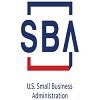Know about the Pre- Submission Meeting
12/11/2020
Category: Other Blogs
Pre-submission meeting refers to a structured process in order to manage and track interactions between the manufacturer and the FDA regarding future applications for approval or approval prior to submission.
Pre-Submission Meeting is an opportunity to get FDA feedback before the intended submission. This is voluntary and requires a formal written application. FDA feedback will be provided in the form of written responses. Applicants can also request face-to-face or conference calls.
Applicability of Pre-Submission meeting
Pre-Sub is applicable to clinical trials: New Drug Application (IND); Device Exemption (IDE); Humanitarian Device Exemption (HDE); Master File; Special Protocol Evaluation, Marketing: New Drug Application (NDA); Premarket Approval ( PMA); Biologics License Application (BLA); Premarket Notice (510 (k)); Other assessments including Automatic Class III designation (De Novo request) and accessory classification request. Laboratory Improvements and Modifications (CLIA); Application CLIA
Exemption (CW); Dual: 510 (k) and Application-Specific CLIA Exemption
Pre-Sub does not apply to general FDA policies or procedures, simple review clarification questions that FDA staff can answer immediately, identified while submissions are under an active FDA review Problem discussion, appeal Pre-Submission Meeting.
Pre-sub-meeting submission consulting
The steps for a successful Pre-Submission Meeting with the FDA vary slightly from device to device. The process of pre sub meeting includes the following:
Helps create specific questions to the FDA that require feedback.
It assists in the creation of Pre-Sub documentation and provides feedback on items such as purpose statements, drafts product labels, and instructions for use. Participate in pre-sub face-to-face or conference calls with the FDA. Different consultants have access to consultation and support throughout the Pre-Submission Meeting and may respond to the FDA on behalf of the client at the request of the client (especially when language barriers are an issue).
Results of the risk analysis of the system which identifies the potential sources of error
Description of the alert and safety mechanisms in the event of device failure, including validation and verification studies demonstrating the effectiveness of these measures.
- Results of bending studies demonstrating the effectiveness of the device under stress conditions
- Results of analytical studies addressing sensitivity and specificity, measurement of intervals, linearity and related issues
- Design and results of comparative studies showing insignificant risk when using the device by untrained operators
- Design and results of device reproducibility studies carried out by untrained operators
- Labelling and instructions for the use of the proposed device
- Dual filers should also include the appropriate 510 (k) documents in their dossier.
- Dual submission study recommendations
The guidelines also recommend that candidates for dual presentation design comparative and reproducibility studies that faithfully mimic patient samples and CLIA-exempt environments. Study plans should identify CLIA dispensation test sites, untrained operators, and expected sample types and matrices.
When to Submit a Pre-Submission?
When considering submitting investigational or marketing application to Notify the FDA review team about device details or/and to gain insight into potential hurdles for approval or approval.
Conclusion: When the new device is not explicitly included in the established regulatory pathway (new analysis, technology, etc.). When planning research to support future applications
tagging: Pre-Submission Meeting


